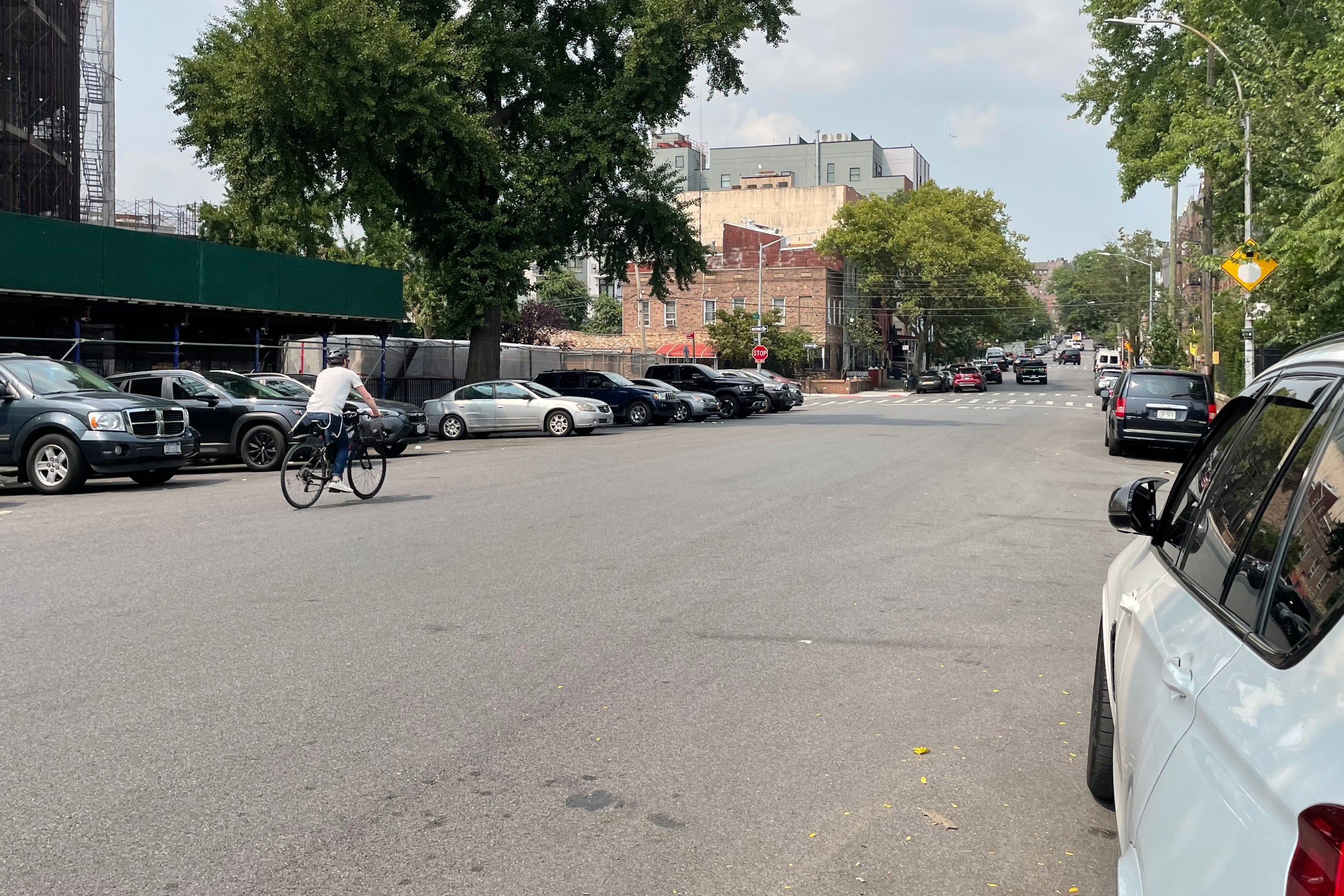With little car traffic and tree-lined waterfront streets, Roosevelt Island is a low-stress environment for bicycling. The bridge that connects the island to Queens, however, is much less bike-friendly. Claiming that the ramp from the bridge to the island is too dangerous, a residents' association is weighing whether to call for a total bike ban on the ramp.
The helix ramp, located where the bridge lands at the southern end of the Motorgate parking garage, provides access to the island for drivers and bicyclists. After a motorist struck a cyclist on the ramp in July, the Roosevelt Island Residents Association (RIRA) public safety committee unanimously passed a resolution recommending that the Roosevelt Island Operating Corporation (RIOC), the state authority that runs the island, prohibit cyclists, wheelchairs and scooters on the ramp [PDF].
The issue, first reported by the Roosevelt Islander blog, now goes before the RIRA common council meeting, scheduled for September 9 at 8 p.m., at the Church of Good Shepherd on Roosevelt Island. The public is invited to attend and speak at the meeting.
Much of the interest in banning cyclists from the ramp appears to be driven by Frank Farance, a public safety committee member who has criticized Bike New York for leading small groups on rides down the helix as part of the bicycle safety courses it offers on Roosevelt Island. To make his case, he's posted video of the supposedly dangerous cyclists, shot while driving behind them on the ramp:
Scandalous!
If cyclists are banned from the ramp, they would be forced to dismount and use stairs or an elevator within the Motorgate parking garage. It's a far less attractive option than using the existing ramp, making compliance with the rule unlikely.
The Roosevelt Island bridge and helix ramp have long been recognized as areas in need of improvement. Last year, island resident Anna Maria Moström was killed while cycling by a turning RIOC bus driver on a surface street near the helix ramp. Island residents say it's one of the least attractive places to bike, despite being the only way on or off the island.
The Department of City Planning recommended building bicycle and pedestrian ramps directly from the bridge to greenways on the island, so users could avoid the helix entirely -- a promising solution, but one that could take years.
In the meantime, the Roosevelt Islander blog points out that small changes could improve safety immediately. For example, the double-yellow lines on the ramp have faded away, potentially leaving unfamiliar users with the incorrect impression that the ramp is one-way. In addition, signs alerting drivers to the ramp's 10 mph speed limit and the presence of bicycles have been removed and could be replaced.
There are ideas on the table to make biking on the Roosevelt Island bridge safer. Banning bicycles should not be one of them.





